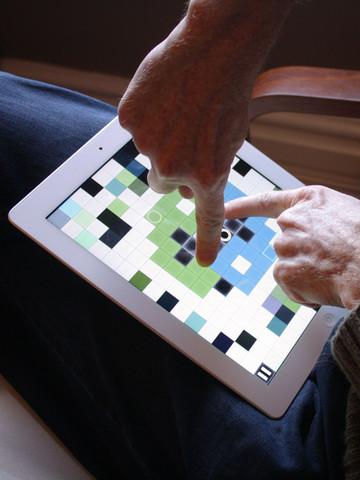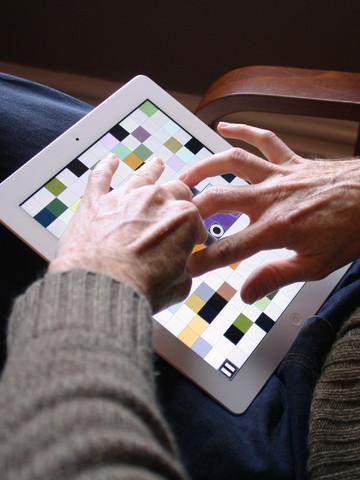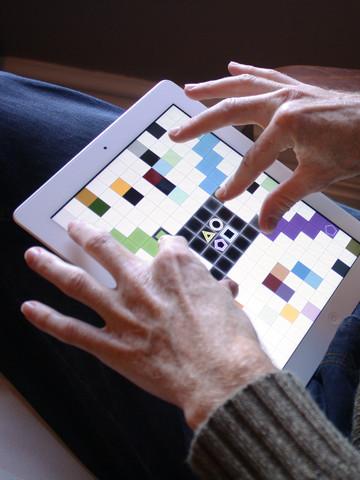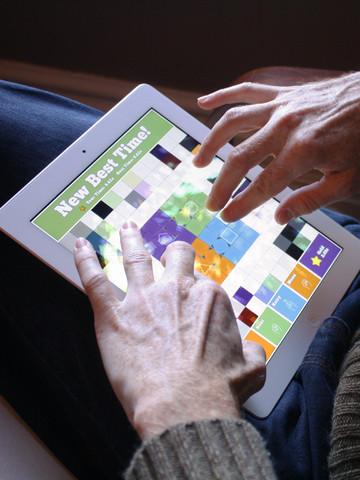- Wondering how to get Monopoly GO! free rolls? Well, you’ve come to the right place. In this guide, we provide you with a bunch of tips and tricks to get some free rolls for the hit new mobile game. We’ll …
Best Roblox Horror Games to Play Right Now – Updated Weekly
By Adele Wilson
Our Best Roblox Horror Games guide features the scariest and most creative experiences to play right now on the platform!The BEST Roblox Games of The Week – Games You Need To Play!
By Sho Roberts
Our feature shares our pick for the Best Roblox Games of the week! With our feature, we guarantee you'll find something new to play!Type Soul Clan Rarity Guide – All Legendary And Common Clans Listed!
By Nathan Ball
Wondering what your odds of rolling a particular Clan are? Wonder no more, with my handy Type Soul Clan Rarity guide.
Finger Tied Review
I love playing an iOS game that really embraces the strengths of the touch-screen interface, instead of trying to force other control schemes onto it. Sure, some of the dual-stick shooters or FPS games turn out fine. Heck, even a few of the platformers are good. But there’s nothing like playing a game on the iPad that simply couldn’t exist on another system, one perfectly suited to the device. Finger Tied is just such a game.

The finger cramps are worth it.
I love playing an iOS game that really embraces the strengths of the touch-screen interface, instead of trying to force other control schemes onto it. Sure, some of the dual-stick shooters or FPS games turn out fine. Heck, even a few of the platformers are good. But there’s nothing like playing a game on the iPad that simply couldn’t exist on another system, one perfectly suited to the device. Finger Tied is just such a game.
Finger Tied starts out simply enough with you dragging a finger along a clearly defined path, but it quite quickly has you moving 2, 3 or even 4 fingers in tandem all over the screen. There are quite a few levels here, spread from beginner all the way to expert — 102 altogether. Every level has the same objective: Tap here and drag to there. You don’t have to drag everything simultaneously, mind you, you just have to tap and hold them all before you can start moving and not lift any fingers until they’re all done.


Your brain wants to draw the lines at the same time, and for a lot of puzzles it helps to pretty much have your fingers mirror each other. But there are some puzzles where your fingers will get tied up (hey!), and you learn quickly that sometimes you need to find other paths to the solution. I especially enjoyed the levels where one finger stays stationary while the others twirl around it. They ratchet up the difficulty later on with the inclusion of tiles on the grid that need to be passed through by a certain finger or with arrows telling you which way you need to enter or leave through.
If you manage to get through all that, or want to try something different, the game also includes a level creator to mess with. It’s probably the most intuitive level creator I’ve ever seen, with you just picking how many fingers you’d like to be active in the level, and then just dragging where you want the path to go. Voila! If only there was a way to share those creations with the world.
What I appreciated the most about Finger Tied was how well it tracked and registered my movement. There’s a lot of potential for disaster when you have multiple fingers moving and twisting in time and along very specific paths. Never once in my time playing it — either alone or in a group — did the game say we did something that we didn’t. Not once did we fail a level and not know exactly why.


It seems simple enough of a premise for a game, but it’s the details of the execution that makes it an enjoyable experience. For instance, each finger gets assigned a different-colored symbol that you’ll start and end on — triangle or circle, for example. But as you begin to move your fingers all over the place to help you keep track (and to help the fatter fingered among us) a ring of the same color as your target moves along with each finger, so you can always easily keep track of which is which. This came in especially handy when multiple people were playing together.
Finger Tied isn’t the first “it’s kinda like Twister but with your fingers” experience we’ve seen on the iPad, but it’s the best I’ve played. One of the main reasons for that is that it can in theory be played single player, whereas most of the others force the multiplayer component on you. Throw in pitch-perfect finger detection and a huge variety of levels (in addition to the creator), and you’ve got a great game that’s both fun alone and in groups.

The good

The bad
More articles...
Monopoly GO! Free Rolls – Links For Free Dice
By Glen Fox
Wondering how to get Monopoly GO! free rolls? Well, you’ve come to the right place. In this guide, we provide you with a bunch of tips and tricks to get some free rolls for the hit new mobile game. We’ll …Best Roblox Horror Games to Play Right Now – Updated Weekly
By Adele Wilson
Our Best Roblox Horror Games guide features the scariest and most creative experiences to play right now on the platform!The BEST Roblox Games of The Week – Games You Need To Play!
By Sho Roberts
Our feature shares our pick for the Best Roblox Games of the week! With our feature, we guarantee you'll find something new to play!Type Soul Clan Rarity Guide – All Legendary And Common Clans Listed!
By Nathan Ball
Wondering what your odds of rolling a particular Clan are? Wonder no more, with my handy Type Soul Clan Rarity guide.







